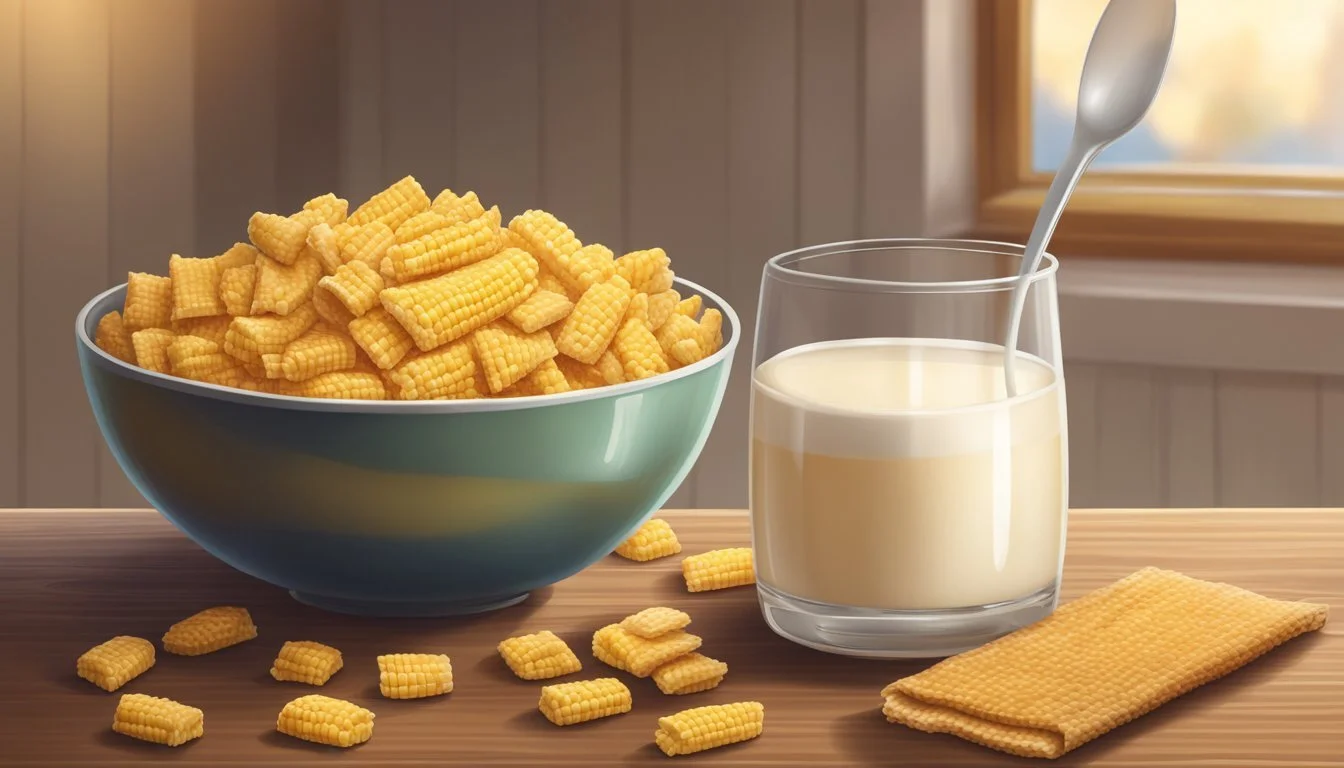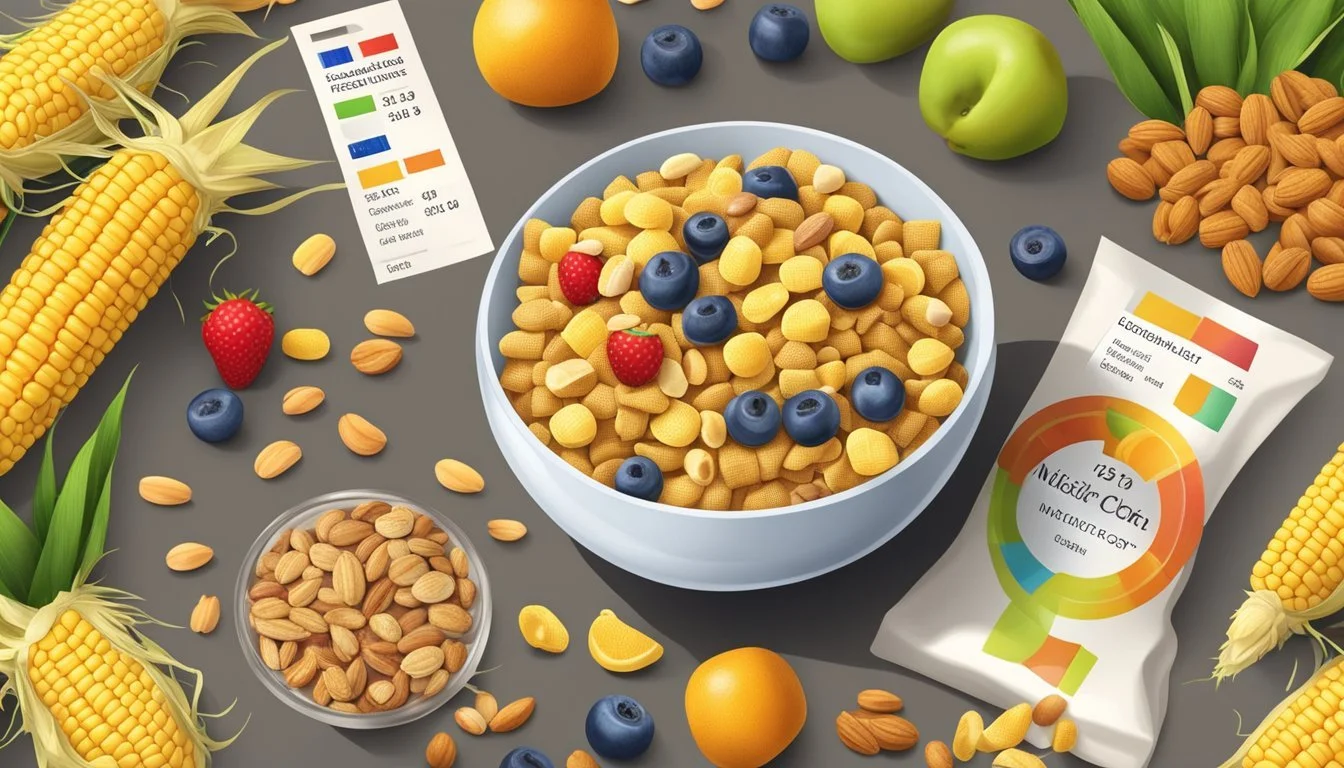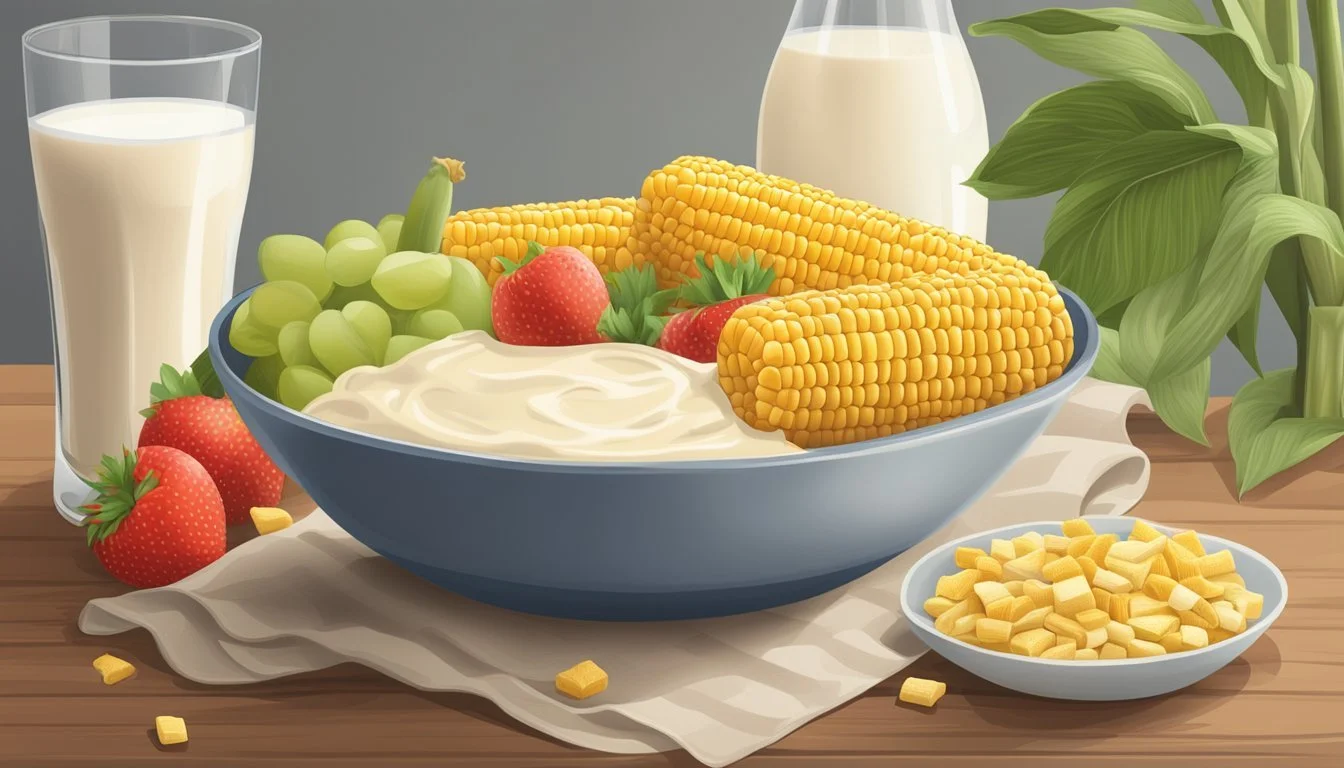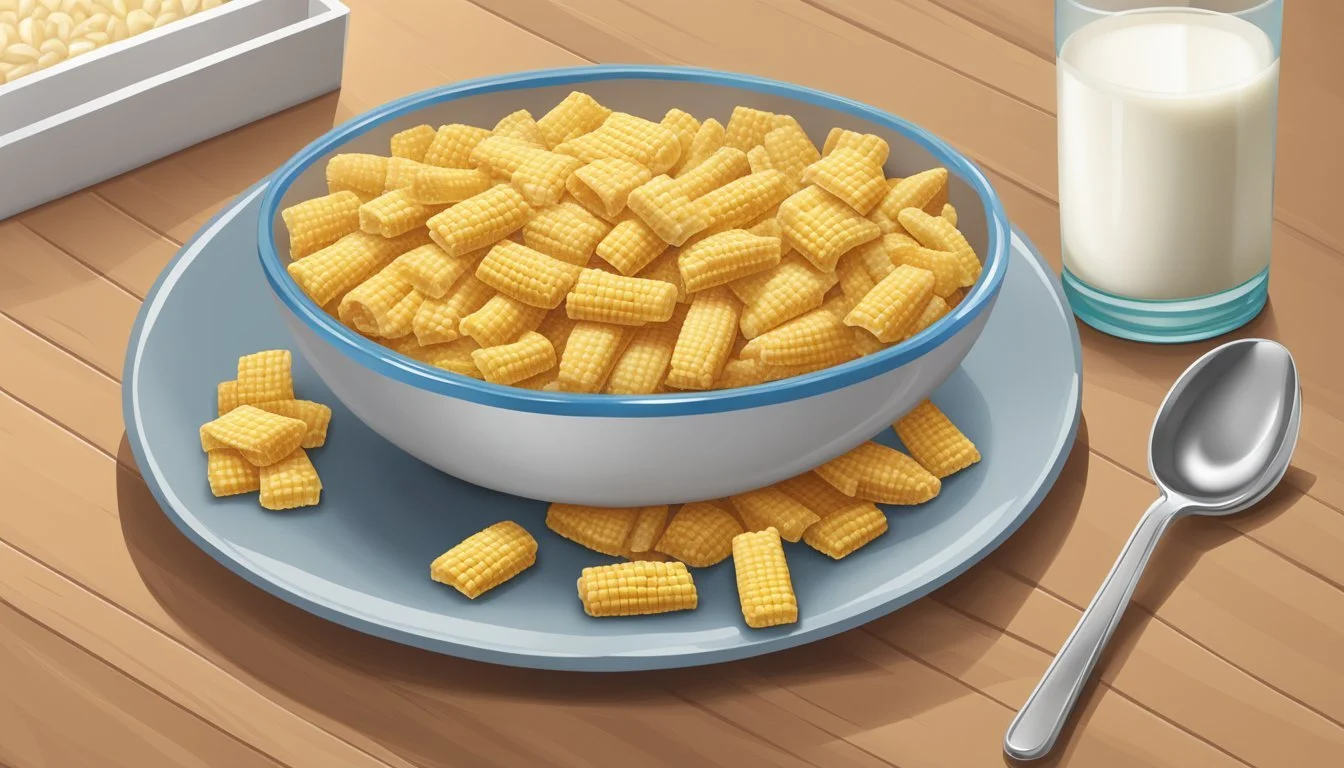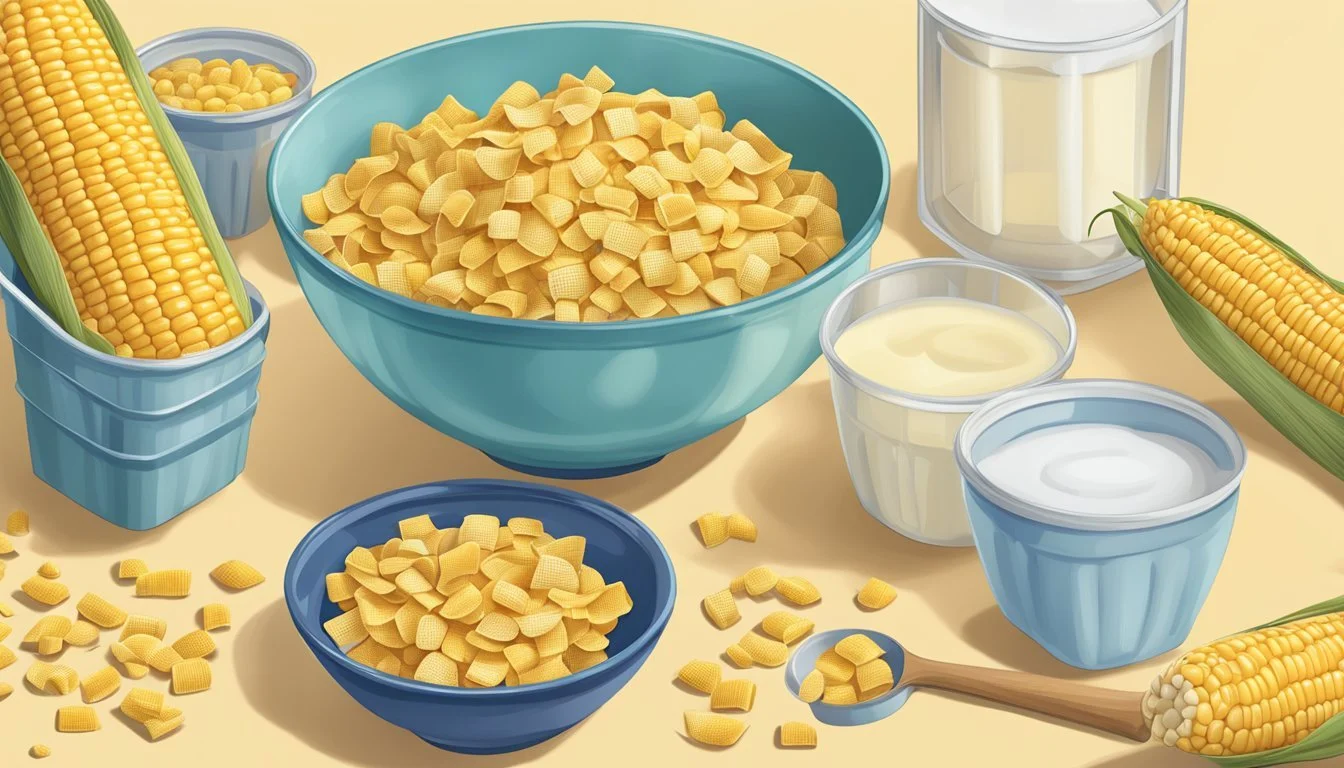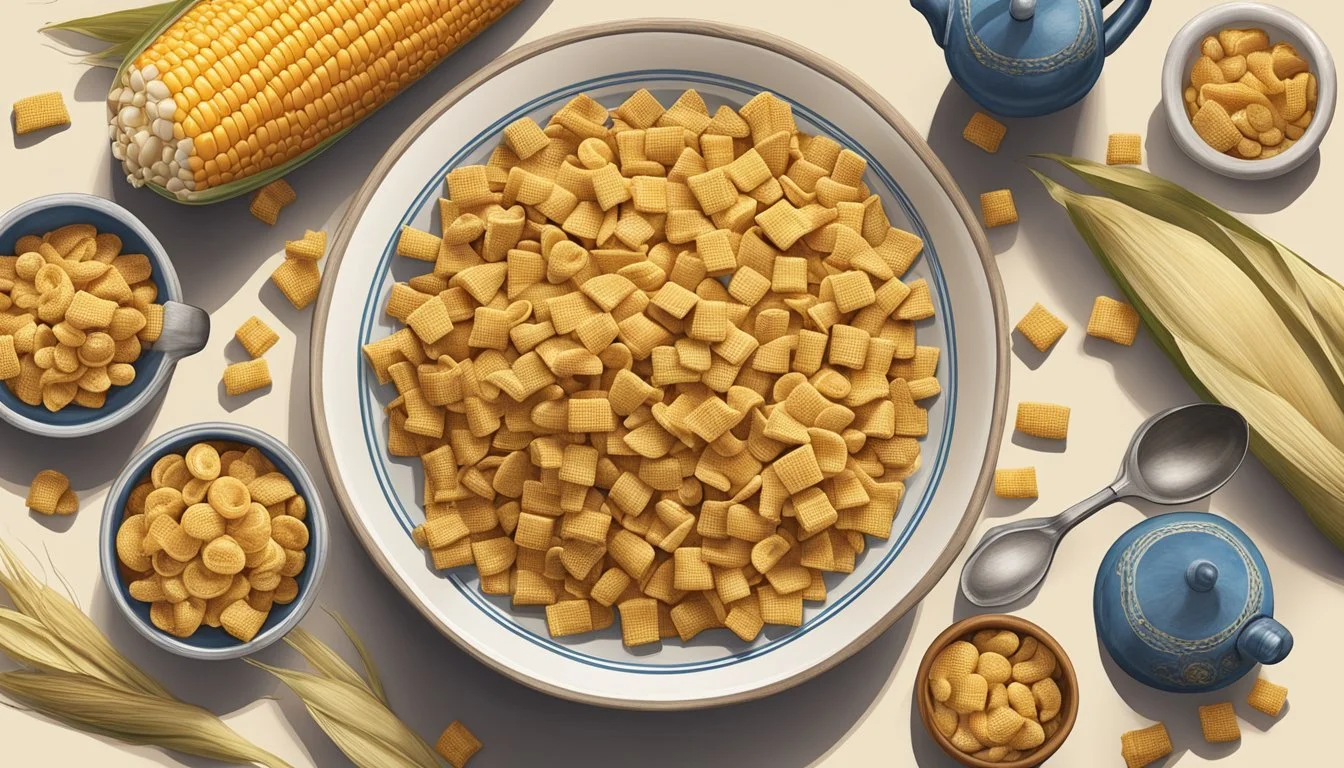Corn Chex Nutrition Facts & More
Essential Facts for a Balanced Breakfast
Corn Chex, a popular breakfast cereal, offers a convenient and tasty option for those seeking a quick morning meal. This crispy corn-based cereal has been a pantry staple for many households since its introduction.
A single serving of Corn Chex (1 1/4 cups or 39 grams) contains 150 calories, 33 grams of carbohydrates, and 4 grams of protein. The cereal provides 16 grams of whole grain per serving, contributing to daily nutritional needs. Corn Chex is also fortified with essential vitamins and minerals, including iron, vitamin A, and vitamin B6.
For those with dietary restrictions, Corn Chex is a gluten-free option that contains no artificial colors or flavors. Its simple ingredient list and nutritional profile make it a versatile choice for various dietary preferences and needs.
Nutritional Profile Overview
Corn Chex cereal offers a balanced mix of macronutrients and essential vitamins and minerals. This popular breakfast option provides energy and key nutrients to start the day.
Macronutrient Breakdown
A 1-cup serving (39g) of Corn Chex contains 150 calories. The macronutrient composition is predominantly carbohydrates, with smaller amounts of protein and fat.
Carbohydrates: 33g (88% of calories) Protein: 2.6g (7% of calories) Fat: 1g (6% of calories)
The cereal is low in fat, with minimal saturated and trans fats. It contains no cholesterol. The primary energy source comes from whole grain corn, which provides complex carbohydrates for sustained energy release.
Vitamins and Minerals Content
Corn Chex is fortified with several essential vitamins and minerals. A single serving provides significant amounts of important nutrients.
Iron: 112% of Daily Value Vitamin B6: 46% of Daily Value Vitamin A: 32% of Daily Value Calcium: High content (exact percentage not specified)
The cereal also contains other B-vitamins and minerals, though in smaller quantities. These nutrients support various bodily functions, including energy metabolism, immune health, and bone strength.
Fiber and Sugars
Corn Chex contains a moderate amount of dietary fiber and sugars. The exact fiber content is not specified in the search results, but as a whole grain cereal, it likely provides some dietary fiber.
Total Sugars: Not specified in search results Added Sugars: Present, but amount not specified
The cereal contains no artificial colors or flavors. While it does contain some sugar, the amount is not excessive compared to many other breakfast cereals. The fiber content helps with digestion and provides a feeling of fullness.
Health Benefits
Corn Chex cereal offers several nutritional advantages as part of a balanced diet. Its fortification with essential vitamins and minerals contributes to meeting daily nutritional needs.
Contribution to Daily Value
Corn Chex provides significant amounts of key nutrients relative to daily recommended values. A single serving contains 10% of the Daily Value for iron, supporting oxygen transport in the body. It also delivers 10% of the Daily Value for calcium, promoting bone health.
The cereal supplies 25% of the Daily Value for thiamin, riboflavin, and niacin. These B vitamins play crucial roles in energy metabolism. Vitamin B12, at 25% of the Daily Value per serving, supports nerve function and red blood cell formation.
Zinc and vitamin A are present at 10% of the Daily Value each. Zinc aids immune function, while vitamin A supports vision and skin health.
Special Nutrients
Corn Chex contains whole grain corn as its primary ingredient, providing dietary fiber. Fiber aids digestion and helps maintain healthy cholesterol levels.
The cereal is fortified with folic acid, offering 50% of the Daily Value per serving. Folic acid is essential for cell growth and DNA synthesis, particularly important for pregnant women.
Vitamin D, added at 10% of the Daily Value, assists in calcium absorption and bone health. Vitamin E, an antioxidant, is present at 10% of the Daily Value.
Corn Chex is low in fat and cholesterol-free, making it a heart-healthy option when consumed as part of a balanced diet.
Dietary Considerations
Corn Chex cereal offers various nutritional aspects to consider when incorporating it into one's diet. Understanding its caloric content, sodium levels, and potential allergens can help individuals make informed choices about consumption.
Caloric Content
A single serving of Corn Chex contains 150 calories. This increases to 190 calories when consumed with half a cup of milk. The calorie content primarily comes from carbohydrates, with each serving providing 33 grams of total carbohydrates.
For those monitoring their calorie intake, it's important to note that a serving size is 1 1/4 cups or 39 grams. This portion size can easily be measured using a standard measuring cup.
Sodium and Cholesterol
Corn Chex contains 290 mg of sodium per serving, which accounts for 13% of the recommended daily intake. This moderate sodium content may be a consideration for individuals managing their salt intake.
The cereal contains 0 mg of cholesterol, making it suitable for those following cholesterol-restricted diets. This absence of cholesterol is typical for plant-based food products.
Allergens and Dietary Restrictions
Corn Chex is a gluten-free cereal, making it suitable for individuals with celiac disease or gluten sensitivity. It's made primarily from whole-grain corn, which is naturally gluten-free.
The cereal contains no artificial colors or flavors, appealing to those seeking to avoid synthetic additives in their diet. It's also free from high fructose corn syrup, a sweetener some consumers prefer to avoid.
For those with corn allergies, Corn Chex is not suitable as corn is the primary ingredient. Individuals with other common food allergies should check the product label for potential cross-contamination warnings.
Product Information
Corn Chex is a popular gluten-free breakfast cereal made primarily from whole grain corn. It offers a crunchy texture and lightly sweet corn flavor that many enjoy as part of their morning routine.
Ingredients List
Whole Grain Corn is the primary ingredient in Corn Chex cereal. The cereal also contains sugar, salt, and molasses for flavoring. Baking Soda is used as a leavening agent to create the cereal's light, crispy texture.
Corn Chex is fortified with several vitamins and minerals. These include Calcium Carbonate for bone health, Niacinamide (vitamin B3) for energy metabolism, and Thiamin Mononitrate (vitamin B1) to support nervous system function.
The cereal contains no artificial colors or flavors, making it appealing to consumers seeking more natural food options.
Manufacturer Background
General Mills, a multinational food company founded in 1866, produces Corn Chex cereal. The company introduced Chex cereals in the 1930s, with Corn Chex joining the lineup in 1958.
General Mills has a long history of innovation in the cereal industry. They have adapted Corn Chex over the years to meet changing consumer preferences, such as making it gluten-free and removing artificial ingredients.
The company emphasizes the nutritional value of Corn Chex, highlighting its whole grain content and fortification with essential vitamins and minerals. General Mills continues to market Corn Chex as a versatile cereal that can be enjoyed on its own or as part of various recipes.
Amino Acid Profile
Corn Chex cereal contains a variety of essential and non-essential amino acids. These protein building blocks contribute to the cereal's nutritional value.
The amino acid profile includes alanine, arginine, aspartic acid, glutamic acid, glycine, and serine. These non-essential amino acids play important roles in various bodily functions.
Essential amino acids found in Corn Chex are histidine, isoleucine, leucine, lysine, methionine, phenylalanine, threonine, tryptophan, and valine. The body cannot produce these, so they must be obtained through diet.
Leucine and lysine are particularly notable in corn-based products. Leucine supports muscle protein synthesis, while lysine aids in calcium absorption and collagen formation.
The exact quantities of each amino acid in Corn Chex may vary. Factors such as corn variety and processing methods can influence the amino acid content.
It's important to note that while Corn Chex provides some amino acids, it may not offer a complete protein profile on its own. Combining it with other protein sources can help ensure a balanced intake of all essential amino acids.
Comparative Analysis
Corn Chex stands out among cereals for its distinct nutritional profile and taste. Comparing it to similar products and whole grain alternatives reveals key differences in macronutrients, vitamins, and minerals.
Similar Food Products
Corn Chex contains 120 calories per serving, slightly higher than Corn Flakes at 100 calories. It provides 2 grams of protein and 1 gram of fiber. The fat content is negligible at 0 grams.
Compared to sweeter options like Honey Ohs!, Corn Chex has fewer calories (120 vs 160) and less sugar. This makes it a better choice for those watching their sugar intake.
Corn Chex offers 33 grams of carbohydrates per serving, similar to other corn-based cereals. It's fortified with essential vitamins and minerals, including calcium, iron, and B vitamins.
Whole Grain Alternatives
Wheat Chex, a whole grain alternative, provides 100 calories per 0.67-cup serving. It contains more protein (3 grams) and fiber than Corn Chex, making it potentially more satiating.
Corn Chex contains 16 grams of whole grain per serving. This is a significant amount, contributing to daily whole grain intake recommendations.
Whole grain cereals generally offer more complex carbohydrates and fiber. They can provide sustained energy and better digestive health compared to refined grain options.
When choosing between Corn Chex and whole grain alternatives, consider personal dietary needs and taste preferences. Whole grain options may offer more nutrients, but Corn Chex remains a popular choice for its distinctive flavor and crispy texture.
Usage and Recipes
Corn Chex cereal is versatile and can be enjoyed in various ways. As a breakfast option, it can be served with milk and topped with fresh fruits, honey, or Greek yogurt for added flavor and nutrition.
For a quick and easy snack, Corn Chex can be eaten dry straight from the box. It's a crunchy, gluten-free option for those with dietary restrictions.
Chex is also a popular ingredient in many recipes. One classic use is in Chex Mix, a savory snack combining the cereal with nuts, pretzels, and seasonings.
Here are some recipe ideas using Corn Chex:
• Chex Puppy Chow: A sweet treat made by coating the cereal in melted chocolate and peanut butter, then dusting with powdered sugar. • Chex Marshmallow Treats: Similar to rice crispy treats, but using Corn Chex instead. • Chex-Crusted Chicken: Crushed Corn Chex can be used as a gluten-free breading for chicken.
Corn Chex can also be incorporated into trail mixes, used as a topping for casseroles, or added to yogurt parfaits for extra crunch.
Historical and Cultural Context
Corn has played a significant role in American agriculture and food production for centuries. Native American tribes cultivated corn as a staple crop long before European colonization.
General Mills introduced Corn Chex cereal in 1937, capitalizing on the widespread availability and cultural importance of corn in the United States. The cereal quickly became popular among American consumers.
Corn Chex reflected a shift in breakfast habits during the early 20th century. As more people moved to urban areas, convenient, ready-to-eat cereals gained popularity over traditional cooked breakfasts.
The cereal's success also coincided with increased mechanization in farming, allowing for larger corn harvests. This abundance of corn made it an economical ingredient for mass-produced foods like breakfast cereals.
General Mills' marketing of Corn Chex often emphasized its wholesome, all-American image. This approach tapped into the cultural significance of corn as a symbol of agricultural prosperity and national identity.
Over the decades, Corn Chex has remained a consistent presence on grocery store shelves. Its longevity speaks to the enduring place of corn-based products in American dietary habits and food culture.

